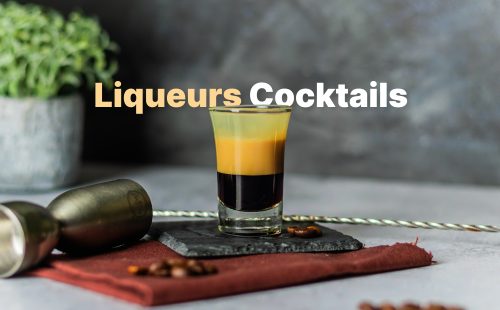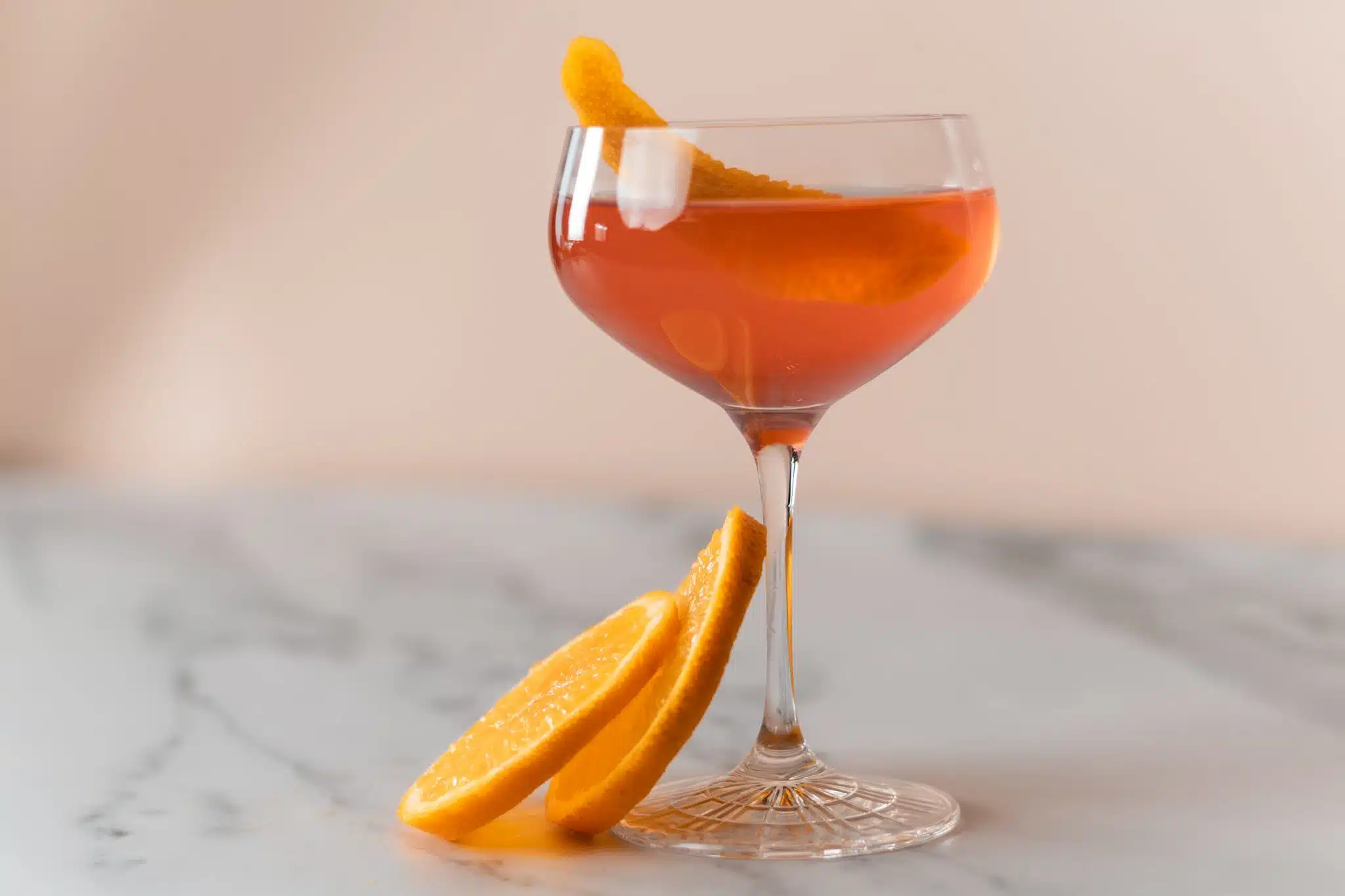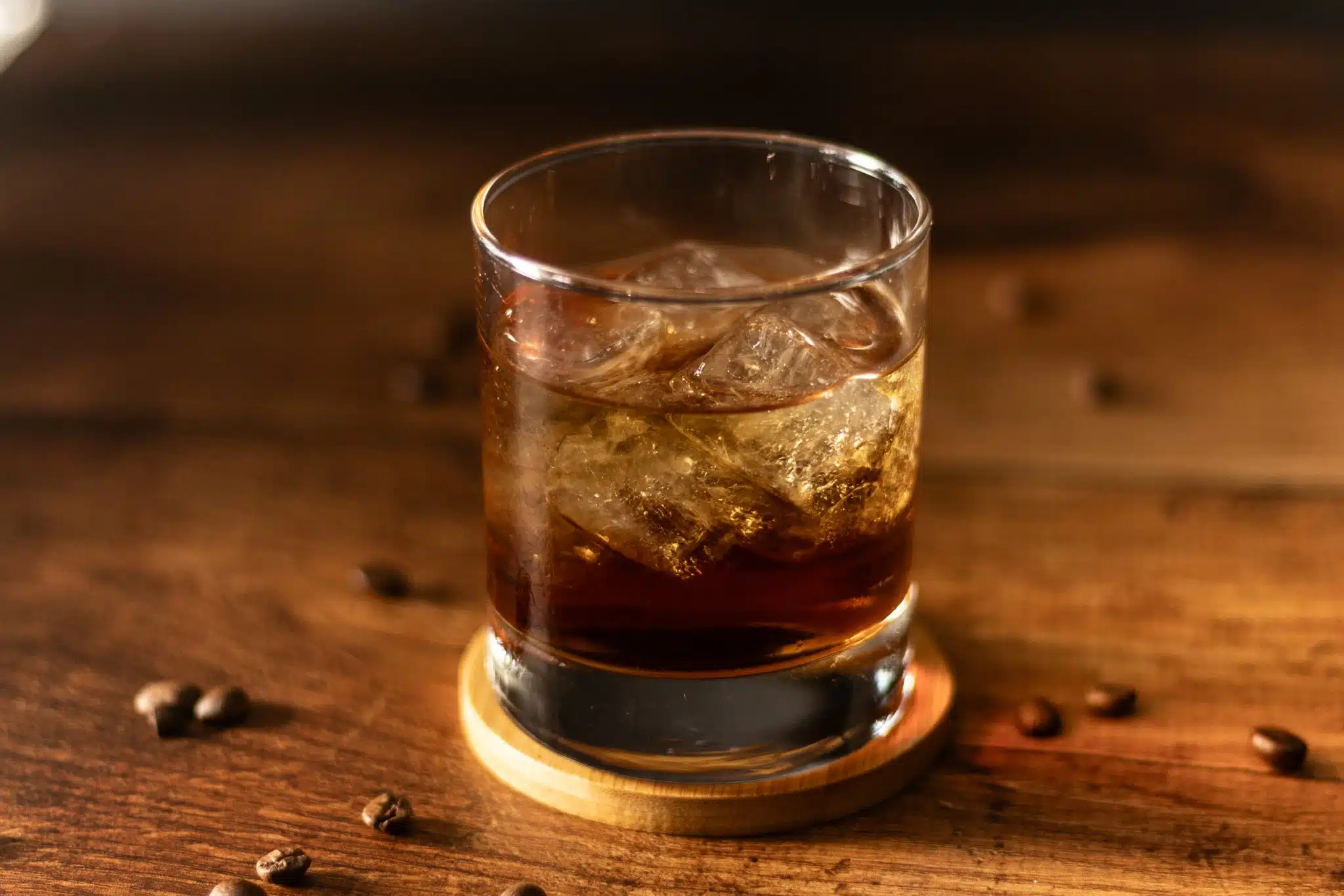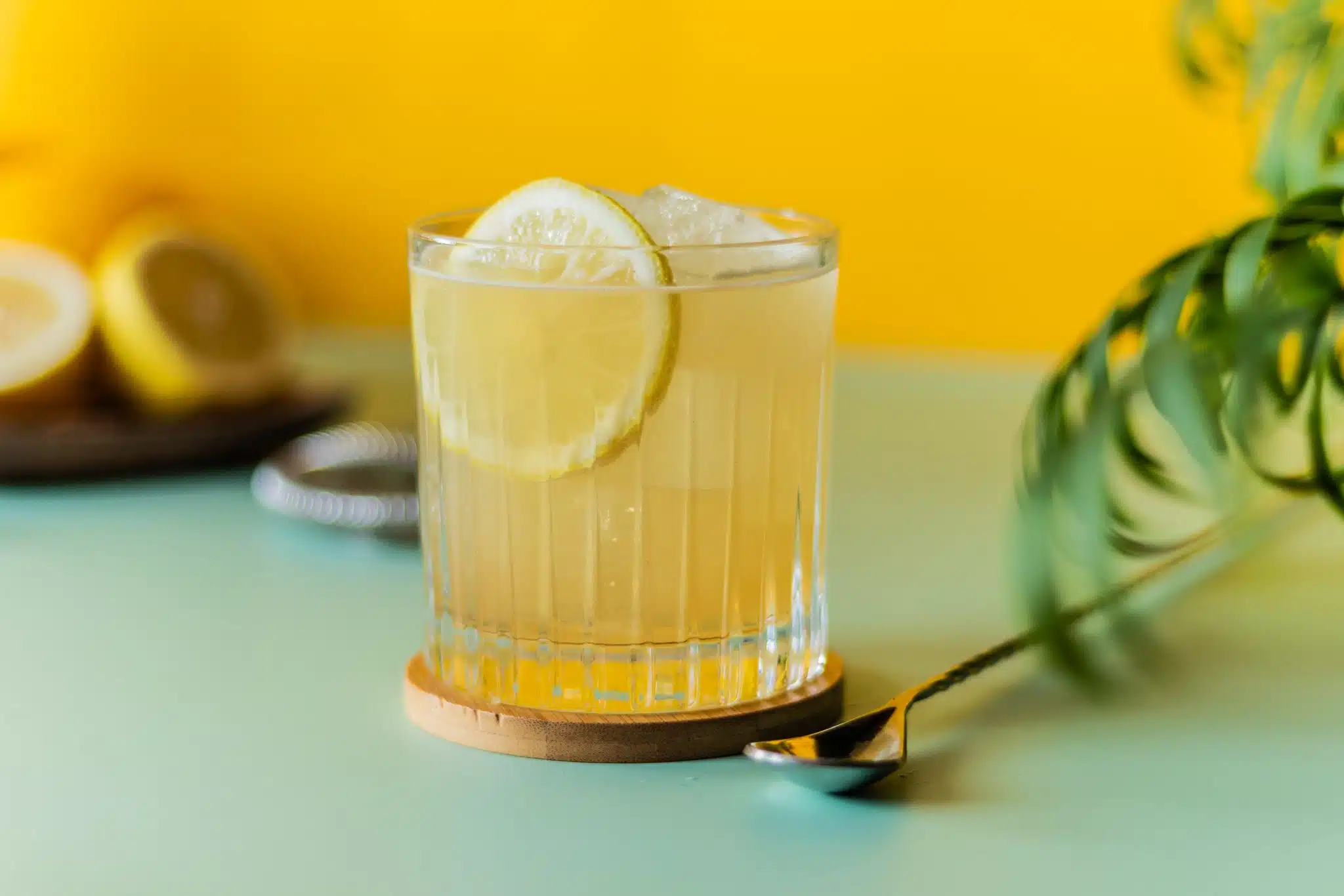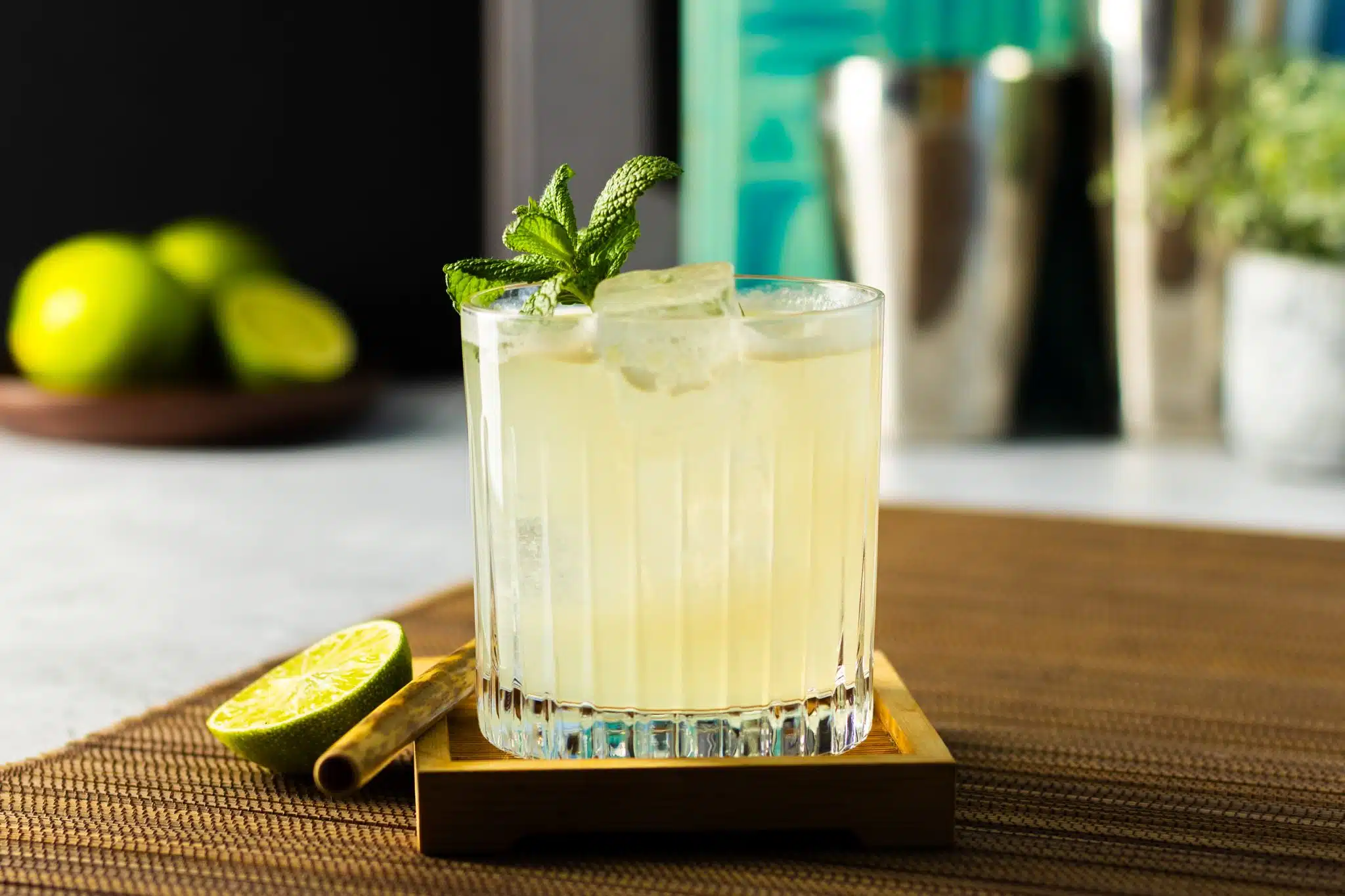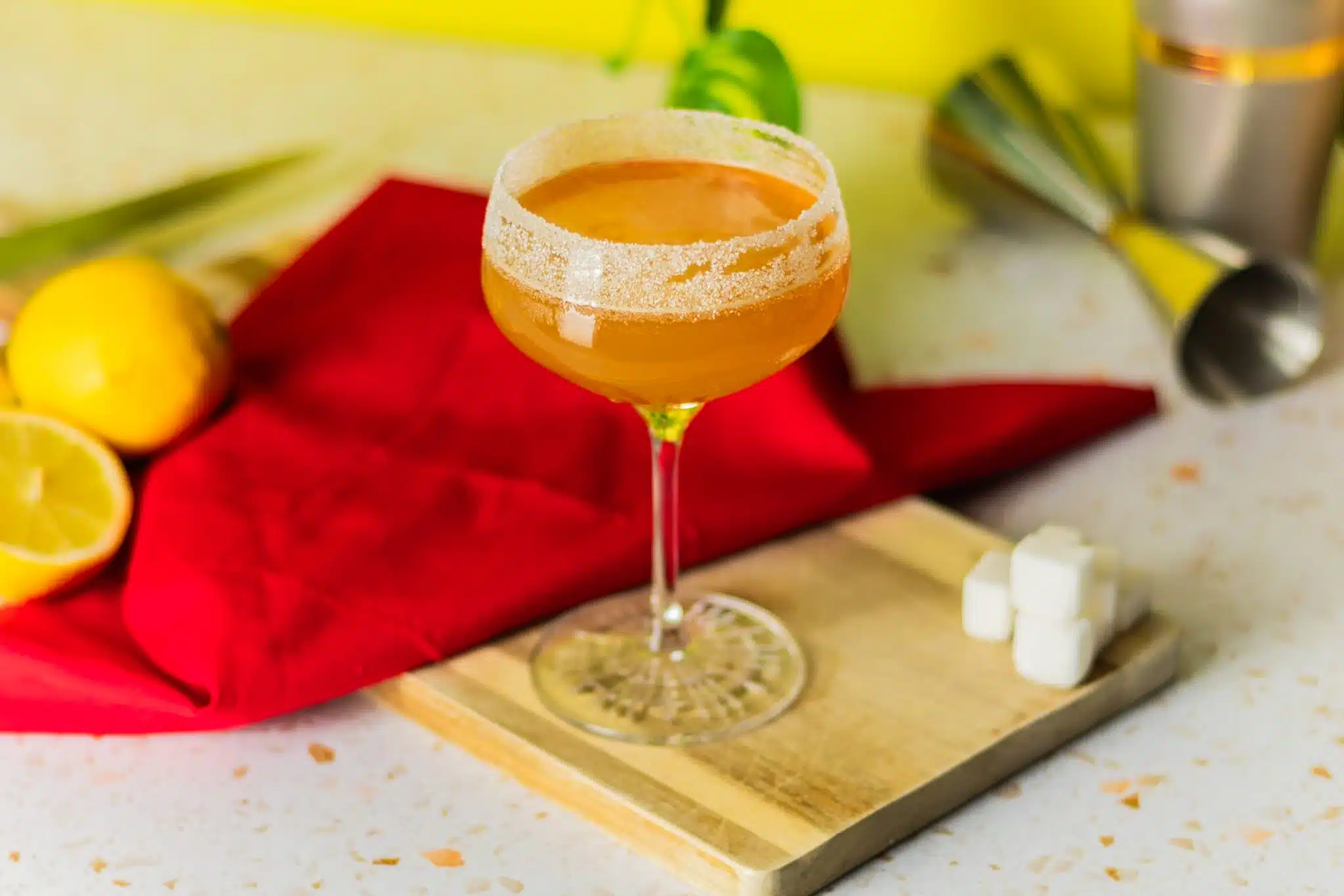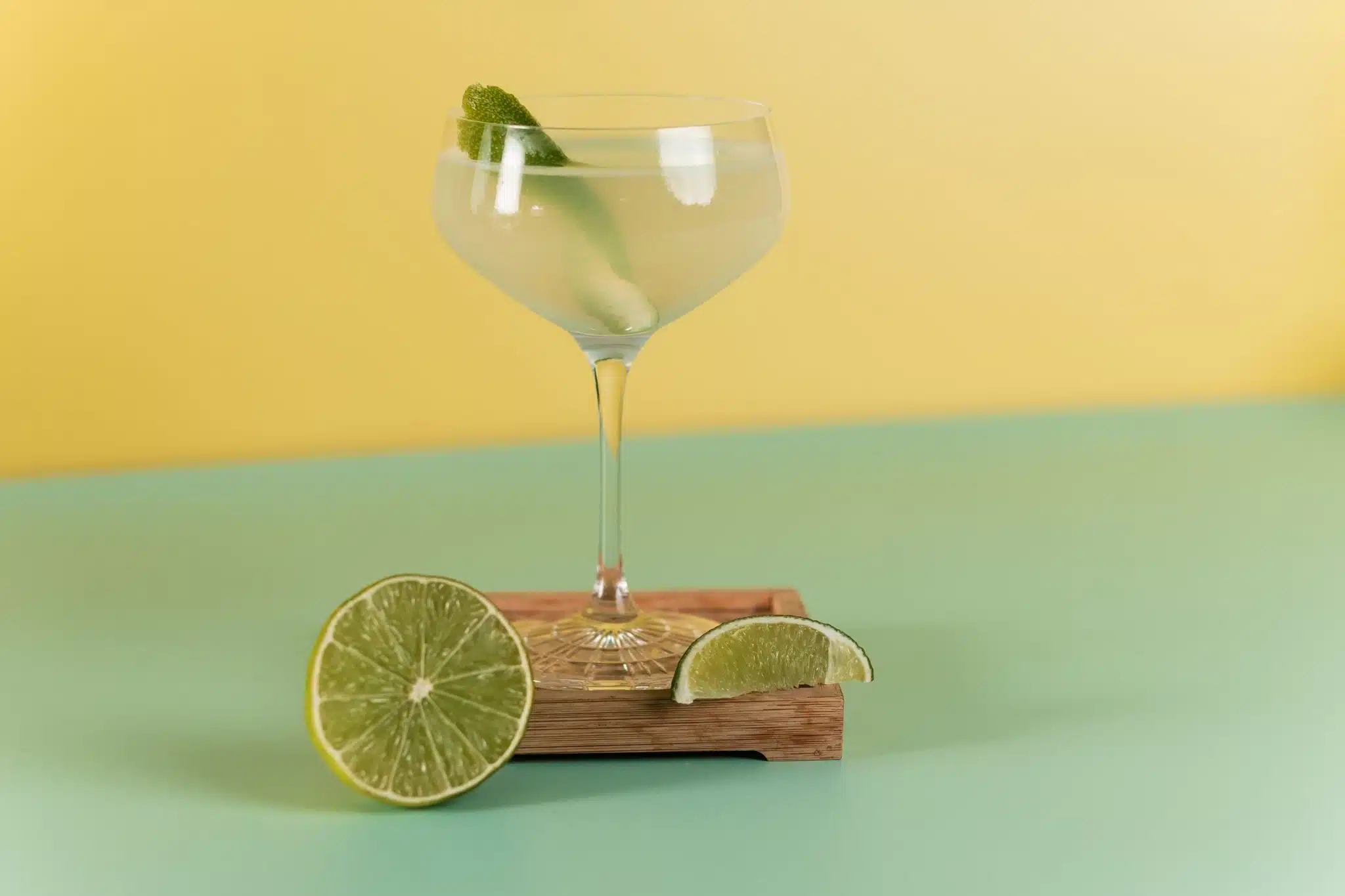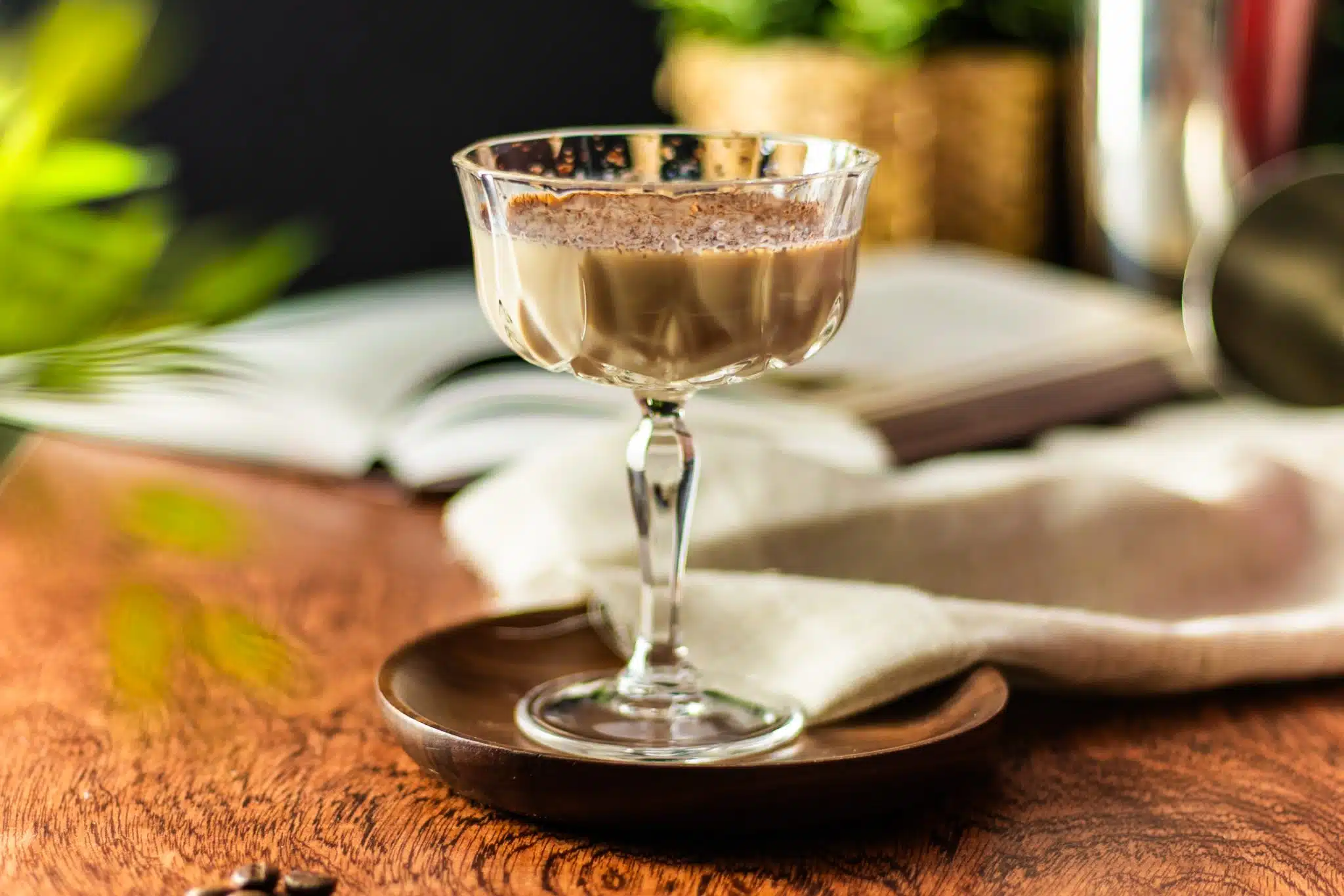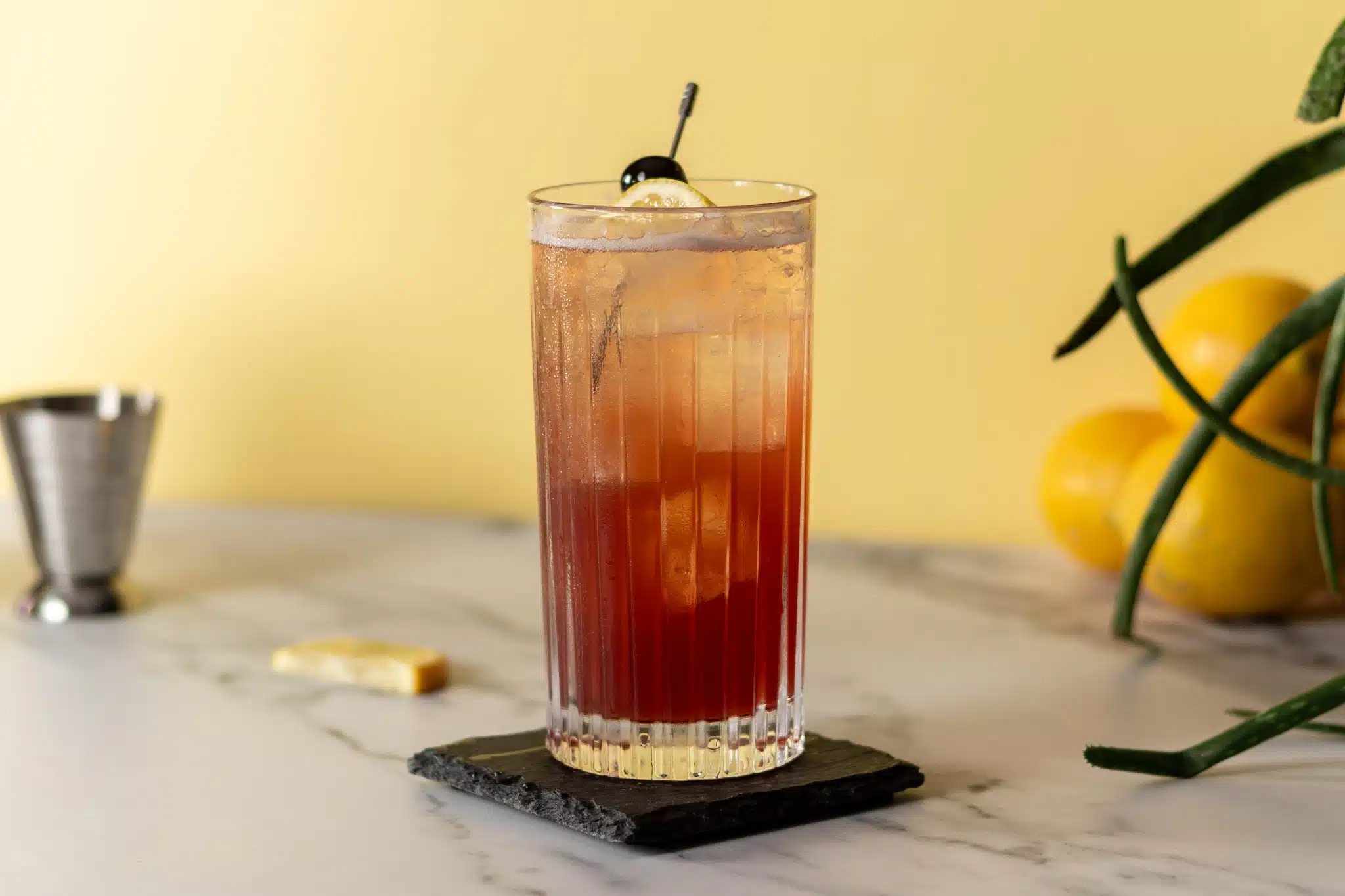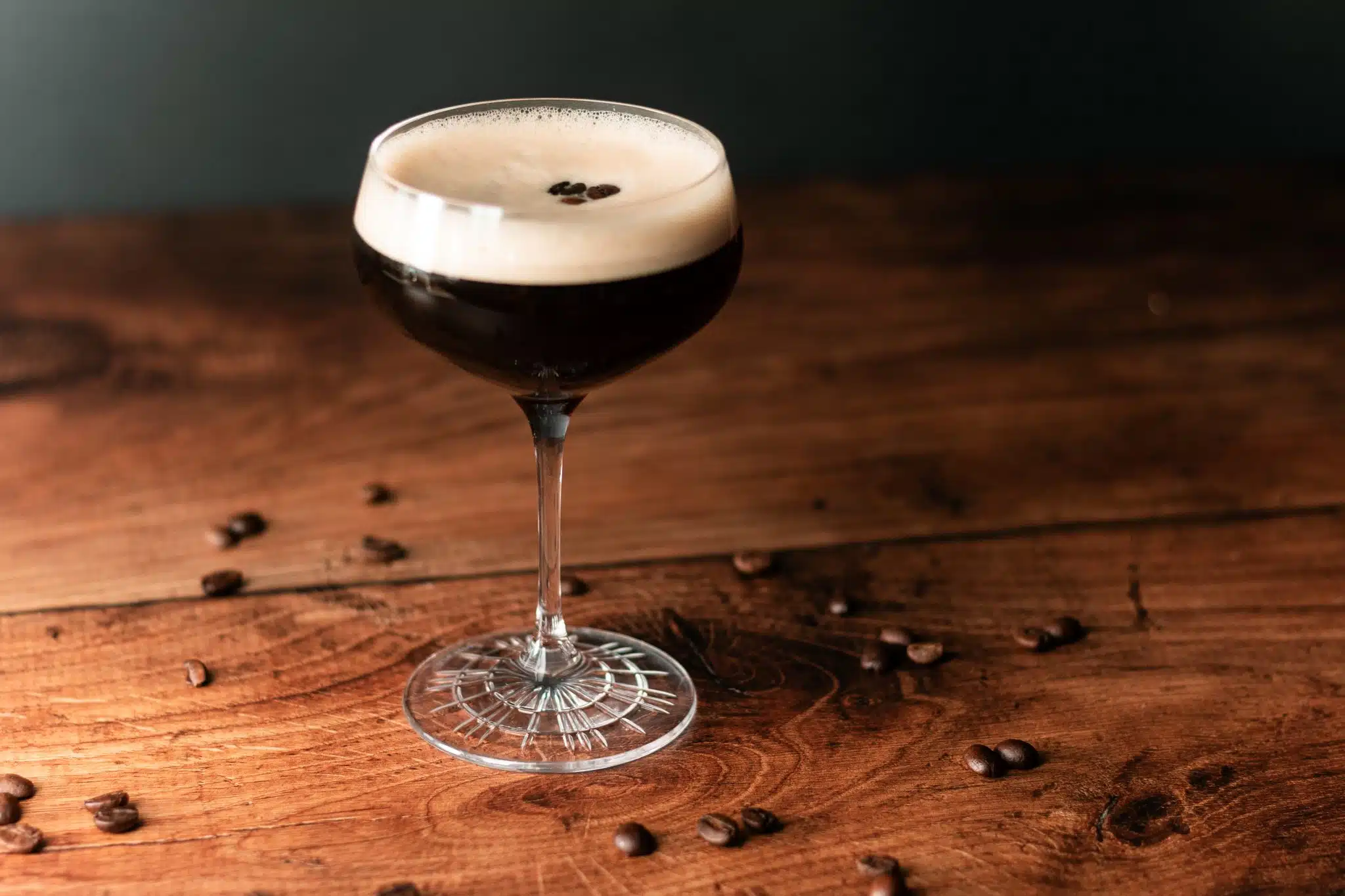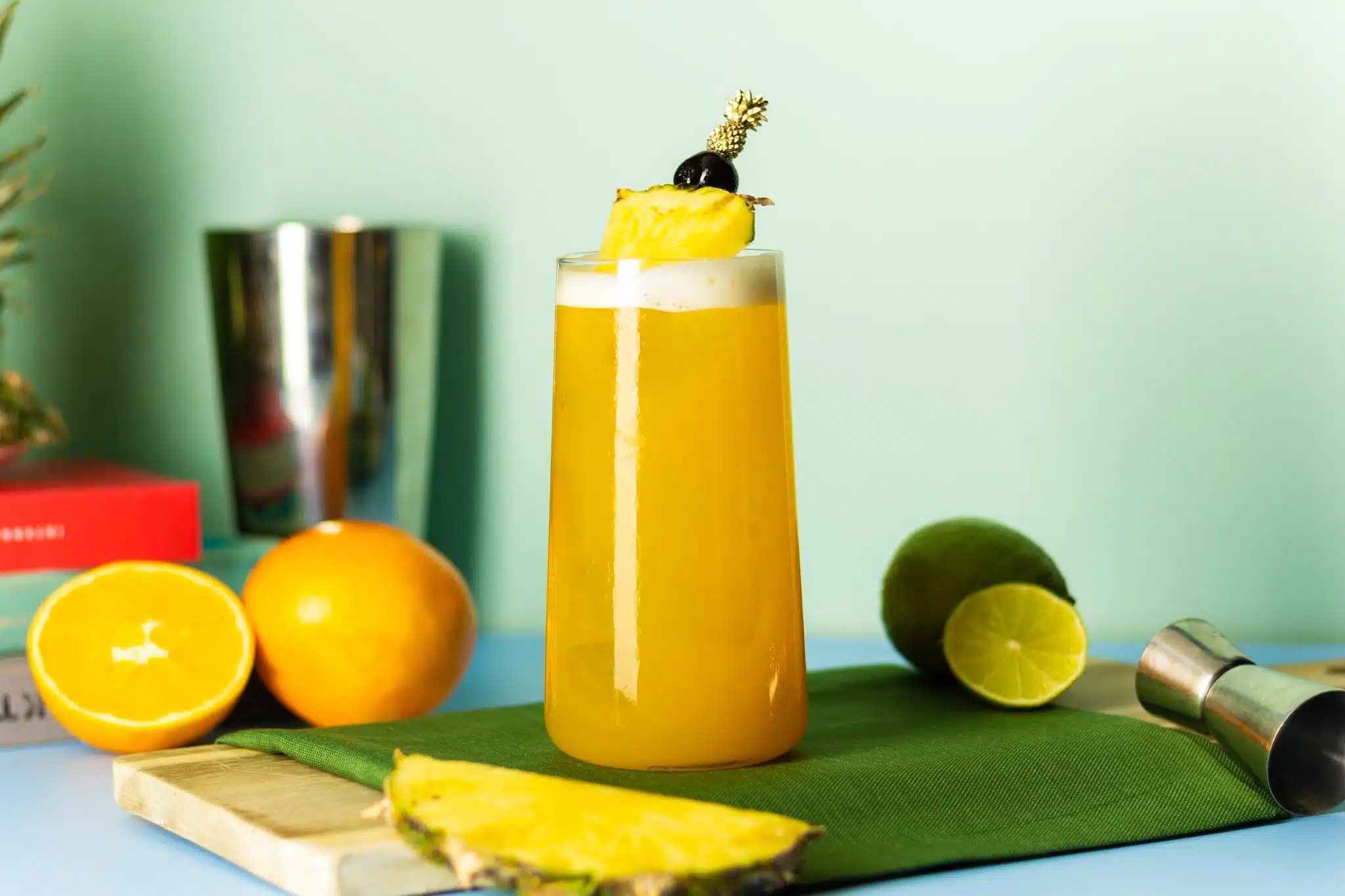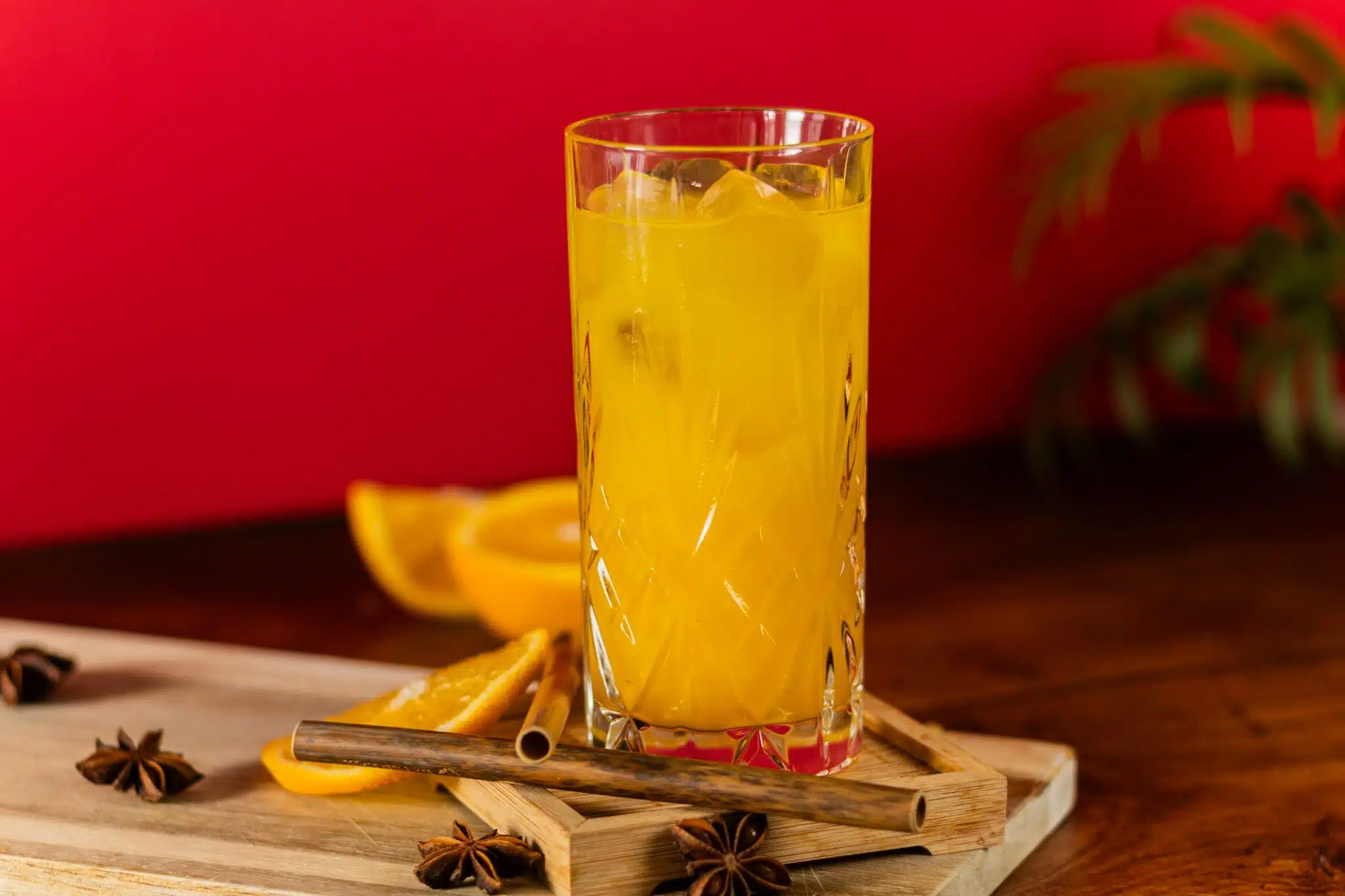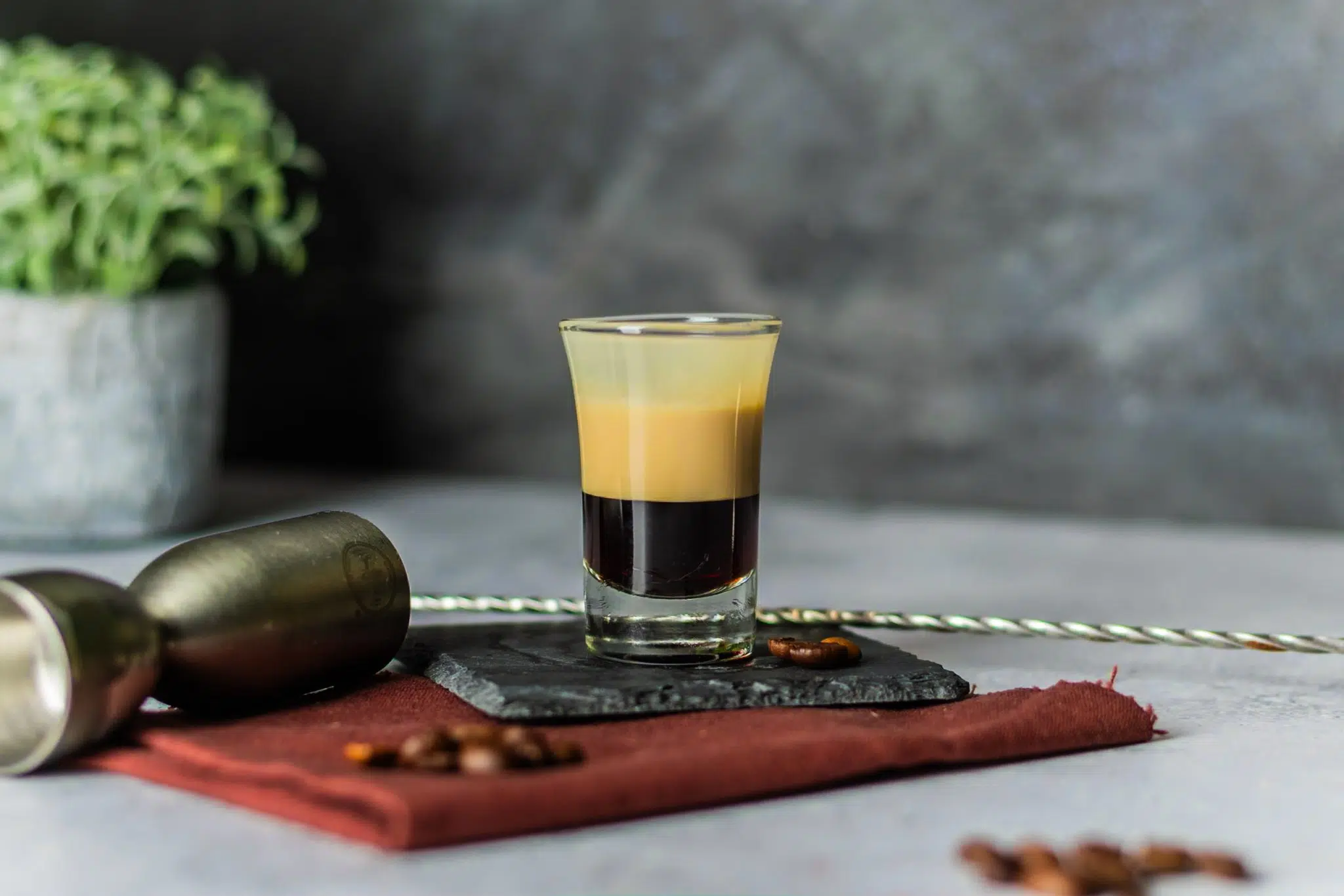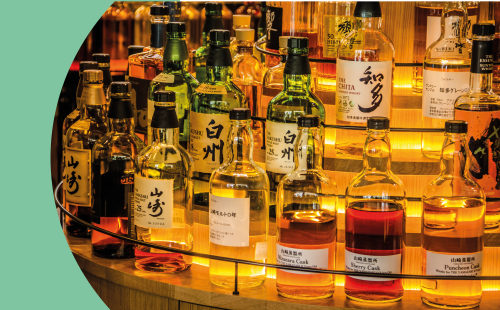Liqueur cocktails are fun, mixing different flavors to create cool drinks. Whether you use a recipe everyone knows or make up your own, they make every drink a little adventure in a glass.
Liqueur cocktails are fun and easy to make at home! You can whip up some of the best and classic drinks yourself with a few special ingredients like zesty orange liqueur, rich coffee liqueur, and sweet cream liqueur. Prepare to mix, pour, and enjoy your tasty creations in your kitchen!
The 20 Best Liqueur cocktails
Check out our DrinksWorld Liqueur cocktail lineup, where each drink, from the zesty Margarita to the sleek Cosmopolitan, has its own tale. These cocktails are not just about what’s in them; they bring a slice of history and adventure to your glass.
Margarita
With its zesty and refreshing flavor profile, the Margarita is among the most beloved cocktails globally. This cocktail from Mexico offers a brilliant blend of sweetness, sour and salty tastes, capturing the spirit of tropical relaxation. There are multiple stories regarding its invention, but one popular narrative suggests it was crafted in the 1930s or 1940s in Mexico for a dancer named Margarita, who was allergic to all spirits except tequila.
Ingredients: Tequila, triple sec (or another orange liqueur), lime juice, simple syrup (optional), and a salt rim for the glass.
Cosmopolitan
The Cosmopolitan, often called a “Cosmo,” is a visually striking cocktail with its vibrant pink hue and is synonymous with the television series “Sex and the City.” It saw its peak popularity during the 1990s, embodying sophistication and urban allure. Though its exact origins are contested, the Cosmopolitan is widely recognized as a balanced and stylish cocktail that has been celebrated in popular culture.
Ingredients: Vodka, triple sec, cranberry juice, and fresh lime juice.
Black Russian
The Black Russian is a cocktail of simplicity and boldness in flavor and history. Created in the late 1940s by a Belgian barman, Gustave Tops, it was made for the United States ambassador to Luxembourg, Perle Mesta. Despite the name, this cocktail has no direct Russian origins but instead derives its name from the use of vodka, a famous Russian spirit.
Ingredients: Vodka and coffee liqueur.
Amaretto Sour
The Amaretto Sour is a slightly sweet-tart cocktail enjoyed since the 1940s. Amaretto, an Italian sweet almond-flavored liqueur, is the star of this drink, offering a delightful sweetness that balances the tartness of the citrus. The Amaretto Sour presents a harmonious blend of sweet and sour, ensuring it remains a beloved choice for many cocktail enthusiasts.
Ingredients: Amaretto liqueur, lemon juice, and simple syrup.
Mai Tai
The Mai Tai, with its tropical allure, transports you straight to the beaches of the South Pacific. Although Trader Vic and Don the Beachcomber, two popular bartenders, claim their invention in the 1930s and 1940s, the true origin remains a mystery. Packed with vibrant fruit flavors and a rum backbone, this cocktail is synonymous with Tiki culture and balmy beach days.
Ingredients: Light rum, dark rum, lime juice, orange liqueur, and orgeat syrup.
Mudslide
The Mudslide, recognized for its dessert-like quality, seamlessly blends the rich flavors of chocolate and coffee. This creamy concoction originating from the Cayman Islands in the 1970s was an accidental creation at a local bar, Wreck Bar.
Ingredients: Vodka, coffee liqueur, Irish cream liqueur, and cream.
Sidecar
The Sidecar, a cocktail with Parisian and London roots, emerged in the roaring 1920s and is often associated with the end of World War I. Its origin is disputed, with both cities claiming its invention. The drink elegantly balances the citrusy tartness of lemon with the sweet and robust qualities of cognac and orange liqueur.
Ingredients: Cognac, orange liqueur, and lemon juice.
Pina Colada
The Pina Colada, the official drink of Puerto Rico since 1978, is a blissful blend of rum, coconut cream, and pineapple juice. It was first created in the 1950s by Ramón “Monchito” Marrero, a bartender who wanted to capture all Puerto Rico’s flavors in a single glass. This creamy, fruity cocktail is synonymous with vacation and relaxation.
Ingredients: Rum, coconut cream, and pineapple juice.
White Russian
The White Russian, a creamy and smooth cocktail, gained popularity thanks to the film “The Big Lebowski” where it was the protagonist’s drink of choice. A variant of the Black Russian, it introduces cream to the mix, offering a velvety counterpart to its sibling cocktail.
Ingredients: Vodka, coffee liqueur, and cream.
Kamikaze
The Kamikaze was probably created on an American naval base in Japan during World War II. It is known for its potent ingredients blend, which gained popularity in the United States during the 1970s.
Ingredients: Vodka, triple sec, and lime juice.
Long Island Iced Tea
Despite its name, the Long Island Iced Tea contains no actual tea and is named for its tea-like appearance. Invented in the 1970s by Robert “Rosebud” Butt, who created it for a contest to make a new mixed drink using Triple Sec, it’s known for its potent combination of several spirits.
Ingredients: Vodka, tequila, rum, gin, triple sec, lemon juice, simple syrup, and a splash of cola.
Baileys Martini
The Baileys Martini delivers a luxurious and creamy cocktail experience. Baileys, introduced in 1974, was the first to combine cream with whiskey and chocolate, and it provides a decadent foundation for various cocktails, such as this smooth martini.
Ingredients: Baileys Irish Cream and vodka.
Blue Lagoon
With its arresting azure hue, the Blue Lagoon offers a visually stunning and tantalizingly tasty cocktail experience. It is attributed to Andy MacElhone, who crafted it in the 1960s at Harry’s New York Bar in Paris. The cocktail’s tropical flair and visually appealing color remain a popular choice for summer events.
Ingredients: Vodka, blue curaçao, and lemonade.
Sloe Gin Fizz
The Sloe Gin Fizz, featuring the red, fruit-infused gin, presents a refreshingly light and slightly tart cocktail experience. Sloe gin, originally used as a medicinal spirit in the 19th century, became the backbone of various cocktails, with the fizz variant offering an energetic, carbonated twist to the fruity gin.
Ingredients: Sloe gin, lemon juice, simple syrup, and club soda.
Espresso Martini
The Espresso Martini, synonymous with vivacity and flair, was reportedly created in the 1980s by a London bartender, Dick Bradsell, who devised it for a model seeking a drink to “wake her up and keep her going”. This cocktail elegantly merges the rich and robust world of coffee with the spirited realm of alcohol, providing a delightful, energetic kick.
Ingredients: Vodka, coffee liqueur, and freshly brewed espresso.
Zombie
The Zombie, famed for its potent, multifaceted mixture of rums and fruit juices, originated in the 1930s Tiki culture. Donn Beach, a prominent figure in Tiki culture, reportedly created it to help a hangover customer survive a business meeting, only for the customer to return complaining it had turned him into a zombie. This vibrant cocktail is synonymous with Tiki bars and tropical escapism.
Ingredients: Light rum, dark rum, lime juice, grapefruit juice, cinnamon syrup, grenadine and bitters.
Kir Royale
The Kir Royale, an elegant and effervescent cocktail, is a champagne-enhanced variant of the classic Kir, a French cocktail named after Félix Kir, the mayor of Dijon in Burgundy, who popularized the concoction. Typically enjoyed as an aperitif, the Kir Royale gracefully combines the fruity crème de cassis with the luxuriousness of champagne to create a celebratory and uplifting drink.
Ingredients: Crème de cassis and champagne.
Harvey Wallbanger
The Harvey Wallbanger, with its playful name and light, citrusy profile, emerged in the 1950s California surf culture. The drink is named purportedly after a surfer named Harvey, who started banging on the walls after a few too many of these. Featuring a prominent layer of Galliano, a vibrant yellow Italian liqueur, this cocktail is as visually distinctive as it is tasteful.
Ingredients: Vodka, orange juice, and Galliano.
B-52
The B-52, renowned for its visually striking layered appearance, emerged in the 1970s. It was named after the American long-range bomber used in the Vietnam War, the cocktail layers three different liqueurs in a specific order to achieve its iconic look and multifaceted flavor profile, offering a smooth, creamy, and slightly coffee-flavored experience.
Ingredients: Kahlúa, Baileys Irish Cream, and Grand Marnier.
Grasshopper
The Grasshopper originated in New Orleans in the early 20th century with its charming green hue and dessert-like qualities. Reportedly crafted by Philibert Guichet for a cocktail competition, which subsequently won second place, this creamy, mint-chocolate-flavored cocktail has become a delightful conclusion to many meals, often appreciated as a liquid dessert.
Ingredients: Crème de menthe, crème de cacao, and cream.
Top 8 Liqueur brands to use in cocktails
Let’s explore the top 8 Liqueur brands perfect for making amazing cocktails. From Baileys Irish Cream’s creamy taste to Kahlúa’s rich coffee flavor, each brand adds a special touch to classic and new drink recipes. These liqueurs are great for cocktail lovers and also work well in desserts and cooking:
Baileys Irish Cream
Baileys Irish Cream is a sweet treat straight from Ireland. It’s whiskey and cream shaken into a silky, smooth drink that many love. People enjoy sipping it straight and like using it to make cocktails and even desserts more exciting. It’s like a dessert in a glass and is super popular worldwide!
Grand Marnier
Grand Marnier hails from France and is a fantastic blend of cognac and bitter orange essence. This liqueur isn’t just tasty on its own but is a key player in both the culinary world and the bar scene, adding a burst of orangey and strong flavor to dishes and drinks. You’ll find it in margaritas, desserts, and even some savory dishes, elevating the taste with citrus and warmth.
Cointreau
This is a French liqueur that bartenders adore because it’s super versatile. It’s a type of triple sec and is known for its sweet and bitter orange peel flavor. It is used in many cocktails, like Margaritas and Cosmopolitans, to add a little citrusy sweetness and bind all the flavors together.
Kahlúa
Kahlúa, coming from Veracruz, Mexico, is coffee in a much more fun, liqueur form. Known for its bold coffee taste, it’s like a sweet, boozy version of your morning cup. It stars in famous cocktails like the White Russian and Espresso Martini, making them deliciously vibrant.
Amaretto Disaronno
Amaretto Disaronno, from Italy, is known for its sweet, almond-like flavor even though it contains no almonds! This liqueur uses apricot kernel oil to get that marzipan-like taste and adds a sweet, smooth note to cocktails and cooking, giving them a gentle, nutty flavor.
Chambord
Chambord is made in the Loire Valley in France and is known for its deep raspberry taste and cool, round bottle. It’s a sweet and rich liqueur combining raspberries, vanilla from Madagascar, citrus peel from Morocco, honey, and cognac into a luxurious drink. It’s often used to add a bright, berry flavor to various cocktails, like the French Martini.
St-Germain
Then there’s St-Germain, which people call “The Bartender’s Salt” because it’s used in many different drinks. This French liqueur is made from elderflowers and brings the party a light, floral sweetness. St-Germain isn’t just tasty but adds a sophisticated, flowery note to many cocktails, making them even more enjoyable.
Campari
Last but not least, we have Campari from Italy, known for its bright red color and a flavor that’s unique and somewhat bitter. It was created in 1860 by Gaspare Campari and blends herbs and fruit to bring a bitter and vibrant kick to drinks. Campari is fundamental in making classic cocktails like the Negroni and Americano, adding a spirited and bold layer of taste.
Don’t confuse liqueur with liquor.
Liqueur and liquor may sound similar, but they’re quite different. Liquor is a distilled spirit like vodka or whiskey, the base alcohol in drinks. Liqueur, on the other hand, is a sweet, flavored spirit often used as an additive in cocktails for extra flavor. Can you find more info about the different types of liquor on our site.
Most used liqueurs in cocktails
Let’s take you through the most popular liqueurs we use to make our cocktails stand out:
Orange Liqueur
Let’s dive into orange liqueur, which brings a sweet and sometimes a bit bitter citrus pop to drinks. It’s like turning an orange into a liquid flavor explosion in cocktails. Used in lots of cool drinks like Margaritas and Sidecars, orange liqueur knows how to make a drink fun, adding a fresh, zesty twist that makes your taste buds dance.
Coffee Liqueur
Imagine transforming a bold, rich cup of coffee into a sweet, smooth drink, and you’ve got coffee liqueur. It’s famous for that deep, roasted flavor and a hint of sweetness, making drinks like the White Russian or Espresso Martini total hits. It’s your go-to if you love a good coffee and want it in a cocktail.
Citrus Liqueur
This one turns those vibrant, zingy flavors from oranges, lemons, and limes into a punchy liquid form. These liqueurs are the life of the party in cocktails, adding that refreshing, tangy kick that lights up every sip. Think of cocktails like the Lemon Drop.
Cream Liqueur
The cream liqueur is like dessert in a glass—smooth, velvety, and oh-so-indulgent. Mixing spirits with cream, this liqueur can make any drink feel like a luxurious treat. It’s perfect in sweet, dessert-type cocktails or even just poured over ice. It’s all about adding that lush, creamy touch to a drink, making it rich and dreamy.
Elderflower Liqueur
Elderflower liqueur is like capturing a flower’s light, sweet scent and bottling it up. Made from gentle elderflower blossoms, a hint of spring and summer is in a bottle. In cocktails, it brings a light, elegant, uplifting, floral sweetness. When a drink needs that subtle, flowery whisper, elderflower liqueur is what you reach for.
Banana Liqueur
Banana liqueur is all about tropical vibes and sweet, fruity flavors. Imagine tasting a ripe banana and turning it into a liquid you can mix into cocktails—yup, that’s it! It can transport a regular drink into a tropical escape, making cocktails like the Banana Daiquiri fun and deliciously sweet.
Maraschino liqueur
Maraschino liqueur is a clear, sweet liqueur made from Marasca cherries. It has a smooth and slightly nutty flavor and adds a rich, sweet depth to cocktails.
FAQs
- What is a liqueur cocktail? A liqueur cocktail is a mixed drink that includes one or more types of liqueur and other ingredients like spirits, fruit juice, cream, or soda.
- Are liqueur cocktails typically sweet? Yes, since liqueurs are often sweet, liqueur cocktails tend to have a sweet flavor profile, although they can be balanced with sour or bitter components.
- Can I make liqueur cocktails without alcohol? Traditional liqueurs contain alcohol, but you can create mocktail versions using non-alcoholic substitutes that mimic the flavor of the original liqueur.
- How should I store liqueurs? Liqueurs should be stored in a cool, dark place and tightly sealed in the bottle to preserve the flavor.
- Are there seasonal liqueur cocktails? Some liqueur cocktails are associated with seasons or holidays, like creamy liqueur drinks in winter or fruity mixes in summer.
- Can I make my own liqueurs for cocktails? Yes, homemade liqueurs can be made by infusing spirits with flavors from fruit, herbs, and spices then sweetening to taste.
- Can liqueurs be enjoyed without mixing in cocktails? Yes, many liqueurs can be sipped neat, over ice, or used to flavor coffee and other beverages.
- What glassware is best for liqueur cocktails? Depending on the recipe, different cocktails may require specific glassware, like martini glasses, highballs, or old-fashioned glasses.
- Should liqueurs be refrigerated after opening? It’s not mandatory, but refrigerating liqueurs can help preserve their flavors and quality.
- How can I garnish liqueur cocktails? Garnishes can include fruit slices, herbs, edible flowers, or even a sprinkle of spices, depending on the cocktail.
- Can I batch-make liqueur cocktails for parties? Yes, many liqueur cocktails can be prepared in larger quantities in advance, ensuring you can enjoy the party, too!
Liqueur cocktails: Amaretto Sour Recipe (and 19 More!)
Discover this easy Amaretto recipe! Made with almond-flavored liqueur and a hint of sweetness, this Italian classic is perfect for any get-together.
Ingredients
- 1½ oz Amaretto
- ¾ oz fresh lemon juice
- ½ oz simple syrup
- Ice cubes
- Lemon slice or cherry - for garnish, optional
Equipment
- Cocktail Shaker
- Measuring Jigger
- Strainer
- Old Fashioned Glass
Instructions
- Prep glass: Fill your rocks glass with cubed ice
- Add Simple Syrup: Add ½ oz simple syrup into the shaker.
- Add Lemon Juice: Pour ¾ oz fresh lemon juice into the mix.
- Add Amaretto: Measure and pour 1½ oz Amaretto.
- Prep Shaker: Fill your cocktail shaker with ice cubes.
- Shake Well: Seal the shaker and shake vigorously for 10-15 seconds.
- Strain and Pour: Use a strainer to pour the mixture into an Old Fashioned glass filled with ice.
- Garnish: Add a lemon slice or cherry as garnish.
Notes
Substitutes
- Amaretto: I've run out of Amaretto before, and I used homemade almond syrup, but it won't contain alcohol. So add a spirit of your choice.
- Lemon Juice: If you're out of fresh lemons, you can opt for bottled lemon juice. Just know that fresh lemon juice will always yield better flavor.
- Simple Syrup: You can dissolve sugar in equally hot water if you don't have simple syrup. Make sure to cool it before using it in the drink.
Making a Pitcher of Amaretto Sour
- Scale: To serve 8, multiply all ingredients by 8. That would be 12 oz of Amaretto, 6 oz of fresh lemon juice, and 4 oz of simple syrup.
- Mix: Mix all ingredients in a large pitcher with ice cubes and stir well.
- Serve: Pour into individual ice-filled Old Fashioned glasses, garnish, and serve immediately.
Making it Non-Alcoholic
- Amaretto Substitute: Use a non-alcoholic almond syrup instead of Amaretto.
- Proceed As Usual: Follow the original steps using the non-alcoholic substitute.
Making it Vegan
- Simple Syrup: Make sure to use vegan-friendly sugar when making your simple syrup. Most white granulated sugar should work, but it's best to double-check.
- Garnish: Opt for a lemon slice instead of a cherry if your cherries are preserved in a non-vegan-friendly syrup.
